Endeavour Features: Space-group Determination
Endeavour Features Overview...
Previous: Structure Solution Wizard...
Next: Molecular Structures...
If the space-group cannot be determined from the diffraction pattern without
ambiguity, the structure must be solved in a common subgroup of several
possible space-groups or even in P1. Hence, the full space- group must be
determined once a reasonable structural model has been found. Endeavour
provides an easy-to-use tool (SFND/RGS; written by R. Hundt, Bonn 2000) in
order to perform this task. As an example, the structure of RuS2 has been
solved in P1:
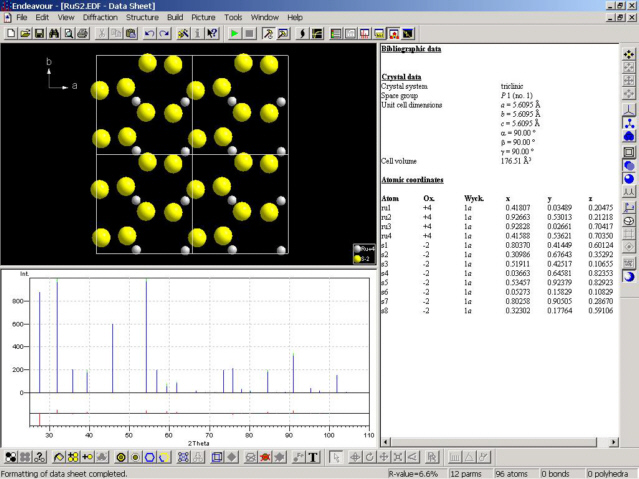
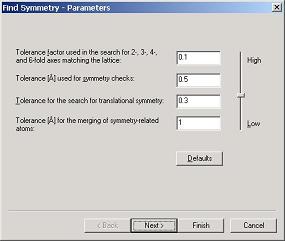 |
First, the tolerance parameters for
the search of symmetry elements have to be set; good default values are
provided which allow a successful space-group determination in many cases. |
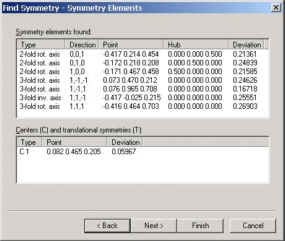 |
In the second step, the symmetry
elements found in the structural model are listed. |
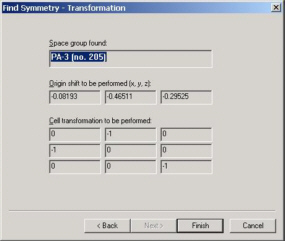 |
Afterwards, the space-group is
calculated from this list of symmetry elements. |
Finally, the space-group is applied to the model; the atoms are located on
special positions, thus the number of atoms in the asymmetric unit is reduced.
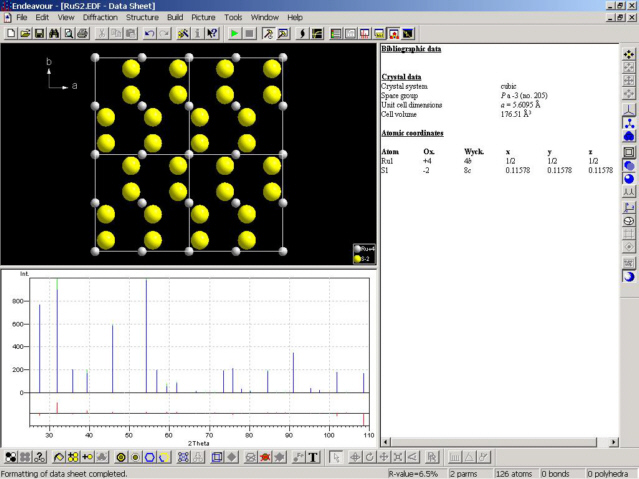
It should be noted that the symmetry-finder in Endeavour can also be used to
check whether an already solved crystal structure contains undiscovered
symmetry elements and could thus be described in a higher space-group!
Endeavour Features Overview...
Previous: Structure Solution Wizard...
Next: Molecular Structures...
|


